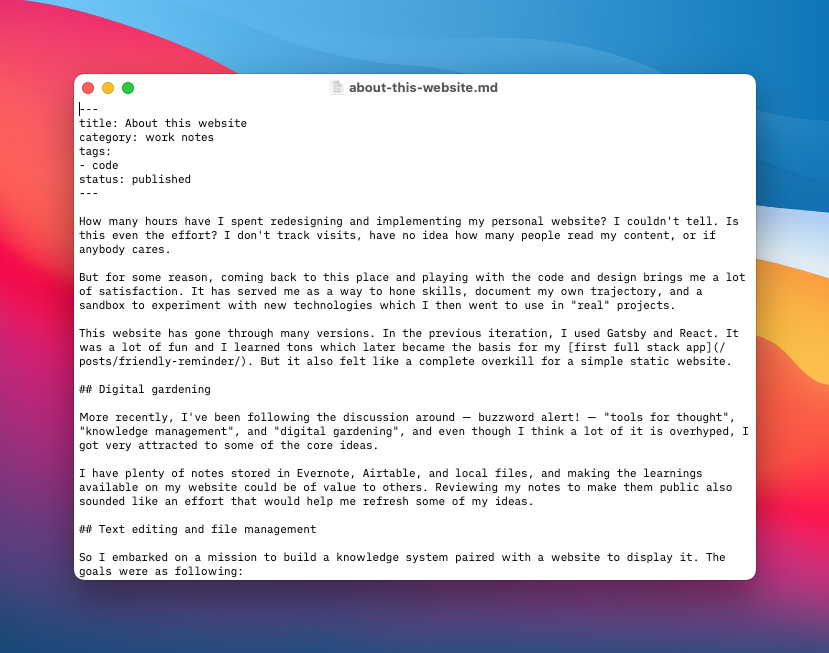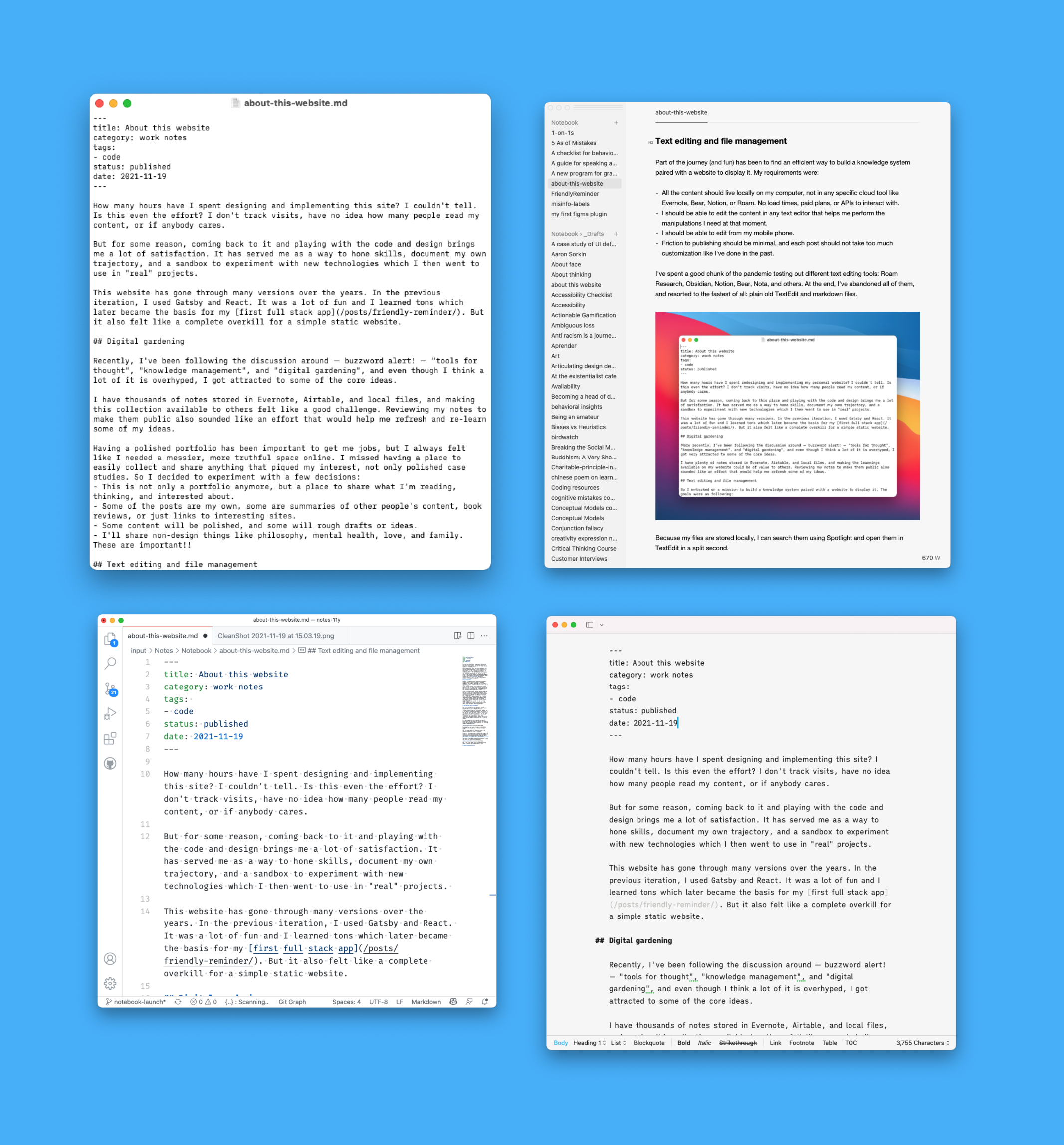How many hours have I spent designing and implementing this site? I couldn't tell. Is this even the effort? I don't track visits, have no idea how many people read my content, or if anybody cares.
But for some reason, coming back to it and playing with the code and design brings me a lot of satisfaction. It has served me as a way to hone skills, document my own trajectory, and a sandbox to experiment with new technologies which I then went to use in "real" projects.
This website has gone through many versions over the years. In the previous iteration, I used Gatsby and React. It was a lot of fun and I learned tons which later became the basis for my first full stack app. But it also felt like a complete overkill for a simple static website.
Recently, I've been following the discussion around — buzzword alert! — "tools for thought", "knowledge management", and "digital gardening", and even though I think a lot of it is overhyped, I got attracted to some of the core ideas.
I have thousands of notes stored in Evernote, Airtable, and local files, and making this collection available to others felt like a good challenge. Reviewing my notes to make them public also sounded like an effort that would help me refresh and re-learn some of my ideas.
Having a polished portfolio has been important to get me jobs, but I always felt like I needed a messier, more truthful space online. I missed having a place to easily collect and share anything that piqued my interest, not only polished case studies. So I decided to experiment with a few decisions:
Part of the journey (and fun) has been to find an efficient way to build a knowledge system paired with a website to display it. My requirements were:
I've spent a good chunk of the pandemic testing out different text editing tools: Roam Research, Obsidian, Notion, Bear, Nota, and others. At the end, I've abandoned all of them, and resorted to the fastest of all: plain old TextEdit and markdown files.

Because my files are stored locally, I can search them using Spotlight and open them in TextEdit in a split second.
This also allows me to pick which text editor to use depending on what task I need to accomplish.
TextEdit is the quickest way to jot down some thoughts; iA Writer gets me in the mood to write longer posts; Obsidian can help me find connections between notes; using Nota, I can see images inline with the text I'm editing; and VS Code is where I go to batch edit and hit publish.
The feeling of owning my own data and manipulating it with open tools like these is quite empowering.

When I want to see images inline with what I'm writing about, I found the best alternative to be Nota.
Another great thing about this setup is that I can store my markdown files in Google Drive or Dropbox, and edit them using any available mobile app. Currently, I use iA Writer on Android.
Going down the same path of "open tools that aren't attached to one specific paradigm", I chose eleventy to build this website. It takes my markdown notes and compiles them into static files in under a second. It has been a great framework to experiment with, and I've been floored by its simplicity and maintainability.

Here are some websites that have inspired me (conceptually, visually, technically) when building my own.
This website was built using Obsidian, Eleventy and Vercel.
The text is set in Untitled by Klim Type Co.